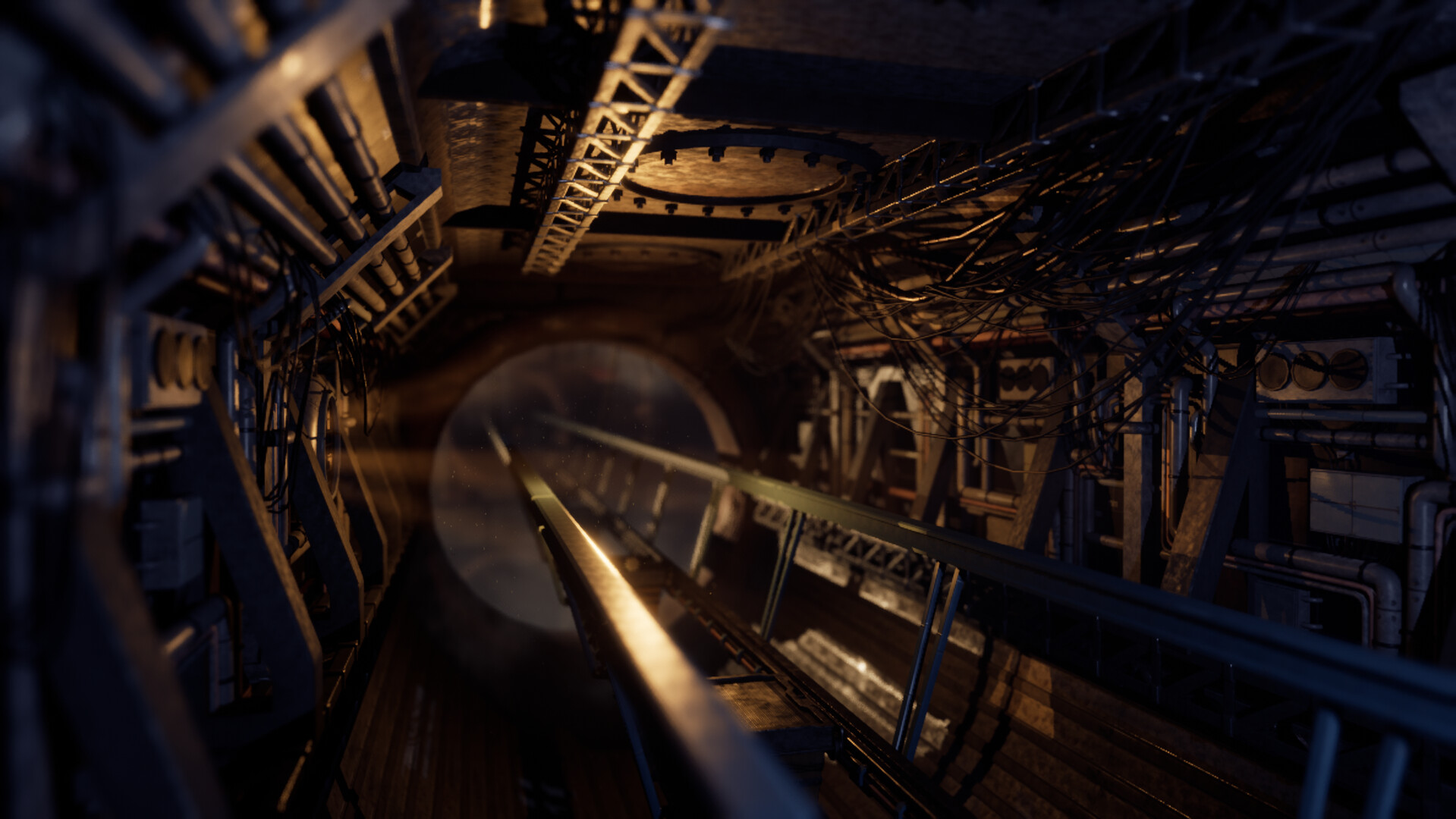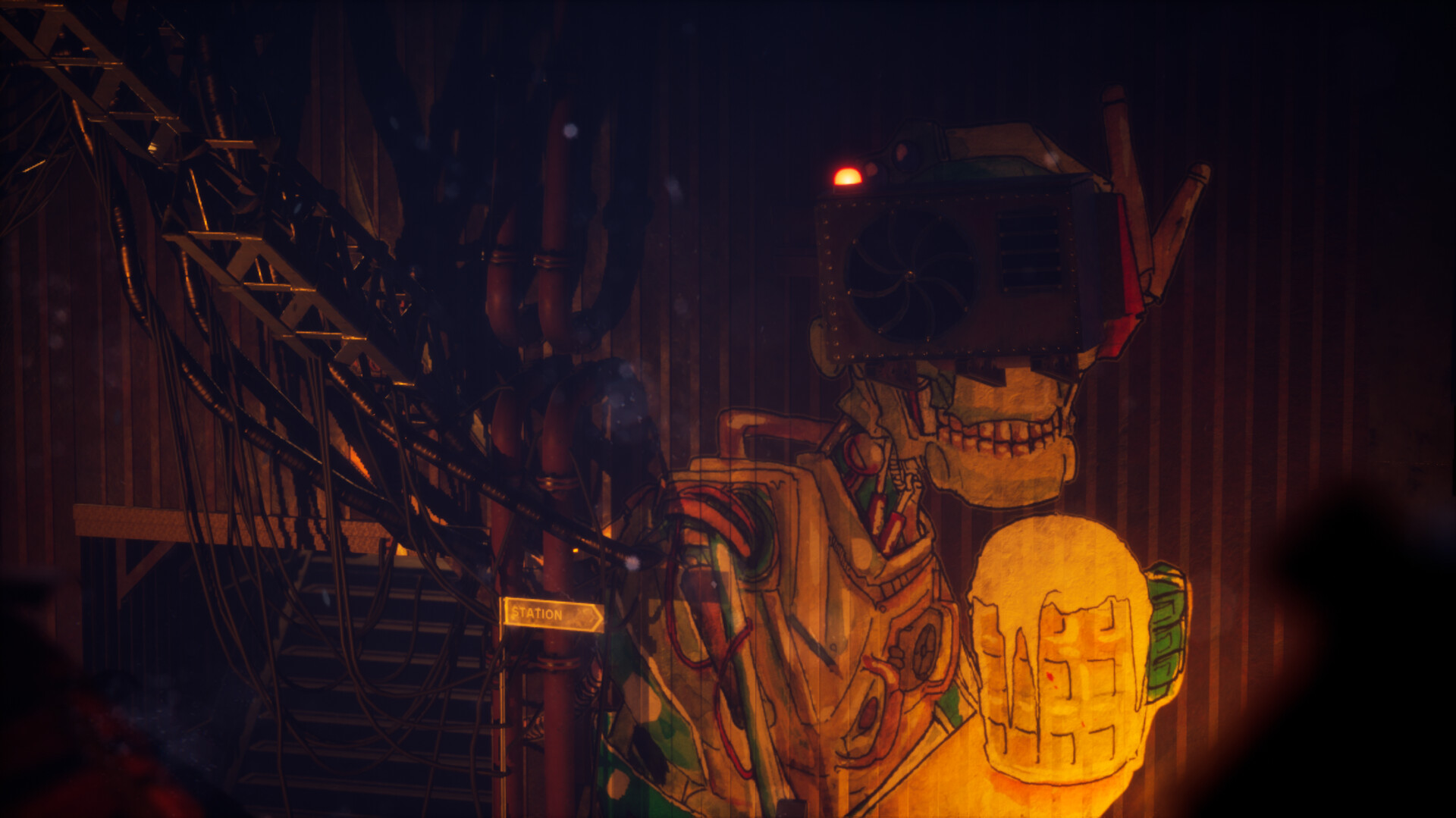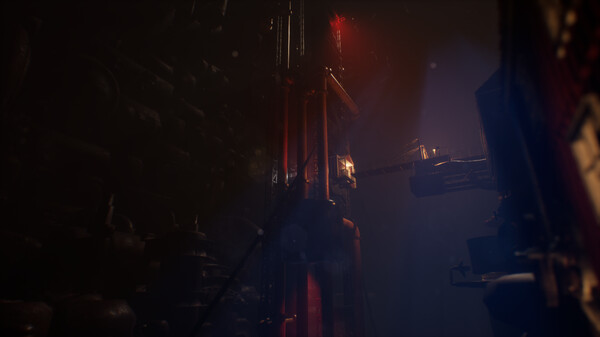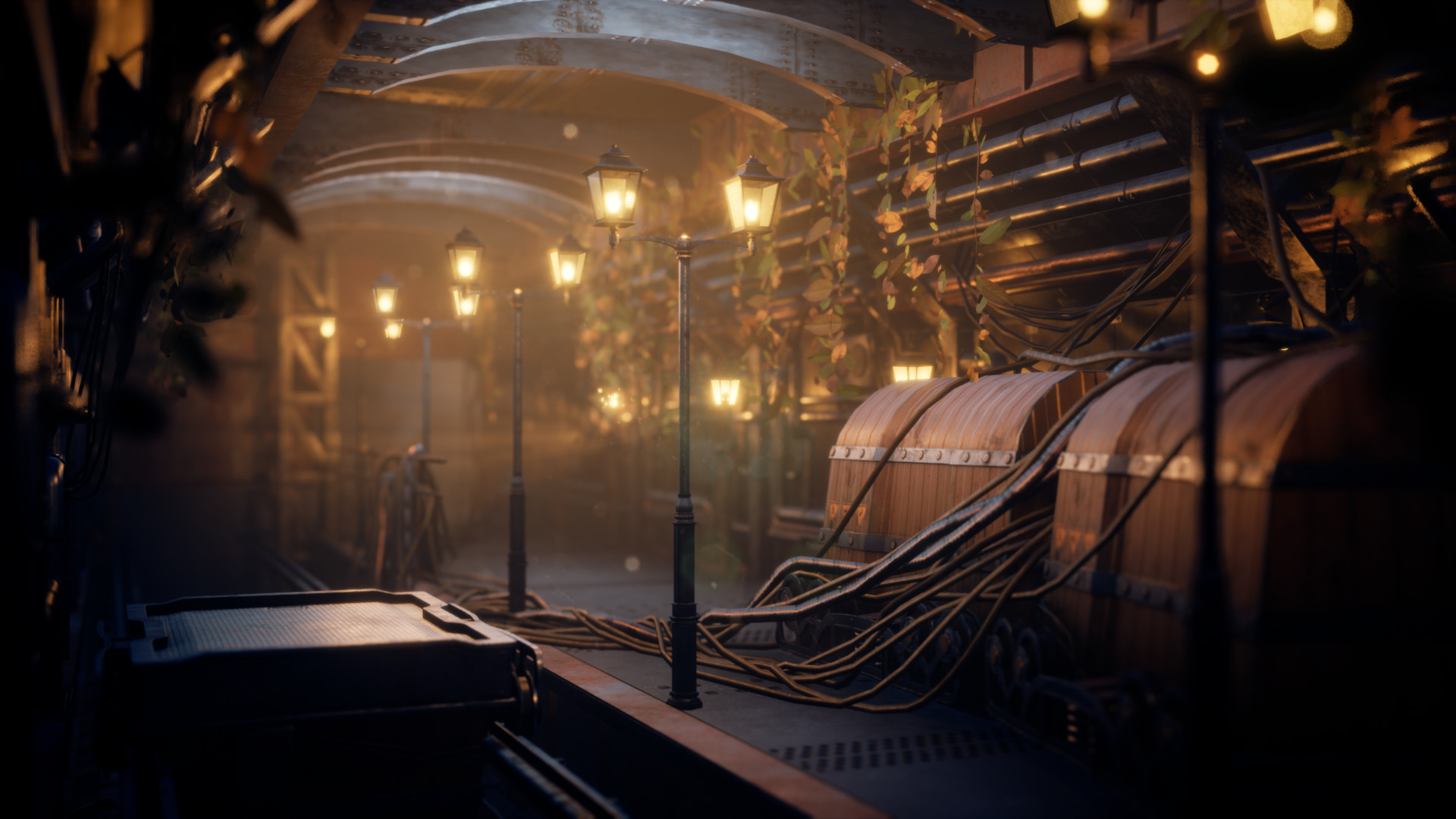a Restless wanderer
The City of Machines wanders restless through the barren wastes. Here, everything is machines; even the inhabitants. Ever onward, the City chases Optimum: the last, fleeting oasis of time left in the world.However, A New Threat Looms On the Horizon.
a Mechanical Puzzle Adventure
Mechanical Sunset is a mechanical puzzle adventure. In the game, the player will get the chance to explore The Wandering City of Machines; a place its robotic inhabitants have made home. This is a bizarre place where the warm, inviting lights of a cabin mingles with heavy machinery, cascades of sparks, and forests of wire and pipe.
On their way through the metal jungle, the player will have to learn to operate the aging machinery; buttons, levers, gauges and lights guide you as you awaken the slumbering leviathan.

Features
- Navigate through the bizarre and unfamiliar world of the Walking City of Machines, where
mechanical meets countryside comfort. - Encounter obstacles that must be overcome by learning to operate large and unfamiliar machinery.
- Learn to interpret what the machines are telling you by reading indicator lights and gauges;
connected to accurately physics-simulated components. - Manipulate the world around you using old, analogue control panels. Satisfying buttons and
chunky levers are your means to get the old machines running again.- Careful: the inattentive player may end up breaking the machinery and have to rely on
alternative solutions to get what/where they want.
- Careful: the inattentive player may end up breaking the machinery and have to rely on
- Talk to the interesting robotic lifeforms around the City.
- Discover their Wishes, Dreams, and Ideals.
- Help them With their Tasks – Or Don’t.
- Ask them for help with puzzles that you can’t crack on your own.
- Discover the truth behind the temporal apocalypse.
- Time is freezing, and it is up to the player to figure out why, and how to stop it.

This is a game for people who like pressing buttons.
Hiya folks! TGIF. For the next 15 or so minutes I thought Id share with you the gist of our current level design process. Or should that be environment design? The scene Ill put together isnt very thought-out from a level design perspective, but mostly intended to look good and carry that Mech-Sun feeling.
We currently work Dallas style, meaning I do most everything related to putting together a level from blocking out the basic route, to ensuring it looks good and pleasantly cluttered; to optimization, level streaming, and collision. It can be a fair bit of workload, but also fairly liberating.
--- Author: Fredrik "Olaxan" Lind ---
Blackest Blackness
This is a completely empty scene in Unreal. Absent of light, skybox, post processing, birds, clouds, and joy. Well throw a boring directional light in there and call it a day. Ill turn off auto-exposure too (using an unbound post process volume), so we can have a properly dark feeling.

In the darkness we can make out some shapes. These are created using Cube Grid, an UE5 tool that makes whiteboxing a breeze. The tool allows for the creation of meshes using a resizable voxel-esque cube tool, like Minecraft or Magickavoxel.

Suddenly these shapes look all dope. Weve enabled RTX. No, in reality these shapes have gone through Houdini Engine, a powerful procedural modelling tool which allows us to generate advanced geometry from inputs in Unreal. It gives us a fantastic starting point when designing a level, since we get to the 80%-mark much quicker although its not sufficient on its own.

This is a good time to add some lights. Our real light blueprints come equipped with a reasonable light temperature and brightness. These light posts are 20W sodium vapour bulbs. They include moths, because moths add realism to everything.

Lets anchor the layout in place with some rusty junk, and add an open balcony at the side of the house for the player to enter through.

Actually, lets add a little platform for the robotic inhabitant to watch the Mechanical Sunset from.

(using our dynamic catwalk tool which automatically ensures theres a railing where apt)
Probably a good time to add some clutter. I think its important to add some detail quite early in the design process, to clearly indicate which area is meant for what purpose. You have to make some decisions and imagine yourself living there. Does any particular corner vibe with you as a cozy breakfast nook? Then of course thats where you should put the table.

Again using Houdini Engine, we can run a physics simulation for a couple of cables hanging from the central pylon. The simulation is baked into a static mesh, which allows us to have incredibly convoluted cables produced very cheap. Ive also added some supports to make the whole thing seem more dream-like and islandesque.

Finally we should add a friend. Had this been a scene for inclusion in Mechanical Sunset, this would be an NPC with a dialogue tree and living behaviour. It would have used the furniture, leaned against the railing, and commented on your progress. For now, its a just a skeletal mesh.

Were kindly but firmly waved off by Tutis, who has to finish moving house.

A few notes before signing off for the weekend! This is not a good tutorial, since it relies heavily on tools weve already produced. See it as a fun look behind the scenes.
For a scene meant to be included in the game, more careful attention to detail would be necessary. Player navigation was not considered but playing the level during the early block-out stages would have made it possible to discern scale and manouverability at that point.
The lighting could use more work, and the placement of carefully considered shadow-casting lights could produce a dramatic effect.
Im thrilled to be working on a game where I can really make use of my love for strange yet cozy environments. (Thanks, Sven Nordqvist.) Hope this could serve as inspiration if nothing else!
Me and the Gumlin(s) wish you a pleasant weekend (where applicable)!
[ 6583 ]
[ 3380 ]
[ 5424 ]














































